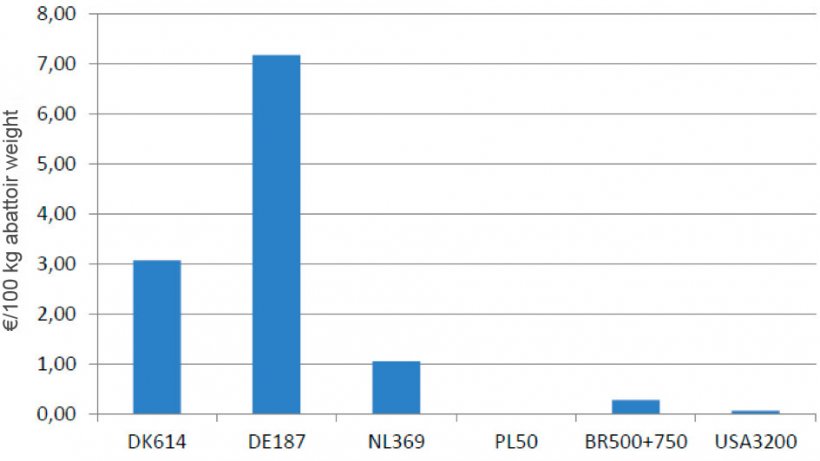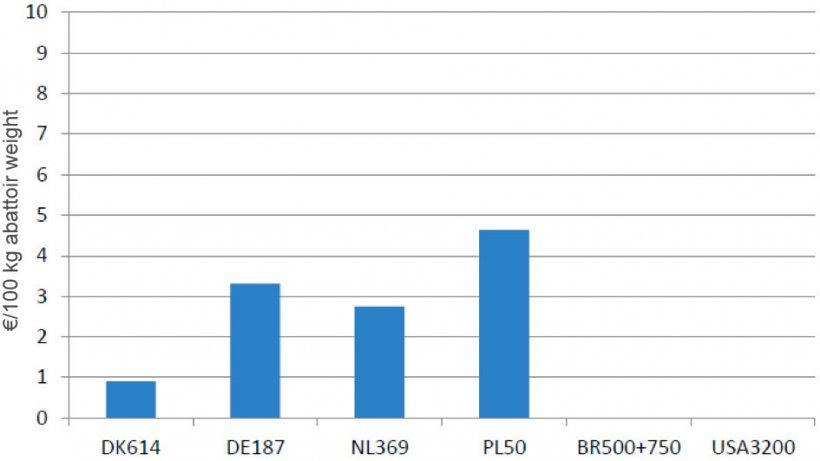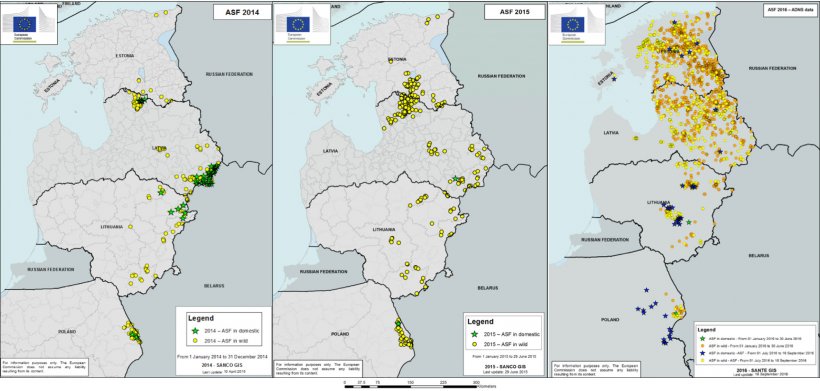The EU produces, every year, some 112% of the pork it consumes, so it must export more than 3 million tonnes to balance its market.
This volumes makes the EU one of the main world exporters (chart 1).


Chart 1 – Main world exporters (January-August 2015 and 2016)
The competitiveness of the world market is fierce, and we set off with some disadvantages, because the European legislation imposes very high welfare and food safety standards that increase the production costs. If we achieve these results it is because we are the best producers in the world.
Charts 2 and 3 show a study by the Commission on the increase of costs due to the differences in the legislation between four European countries and our main competitors: USA and Brazil.

Chart 2 – Differences in environmental costs due to the European legislation

Chart 3 – Differences in welfare costs due to the European legislation
So, we must be prepared for the new challenges that the Commission wants to impose in order to be able to adapt and still be competitive.
Next we highlight some of the items that we judge more important:
1. Castration
In 2010, there was a great movement in Europe of the so-called animal rights defenders against the surgical castration of piglets, organising a very powerful campaign in the media that had a negative impact on meat consumption.
After hard negotiations, an agreement was signed between the producers, the meat industry, animal rights NGOs and the Commission whose goal was to stop surgical castration in 2018. I want to remind you that this was a goal, not an imposition. In order to reach this objective a series of items had to be met, specially the development of an effective method for the detection of boar taint at the abattoir.
We must bear in mind that this referred to the castration of males, and not of females.
This is a serious problem, because nowadays more than 70% of the exports are to Asian countries, that only want females and castrated males, and it is said that Asian consumers have a very fine sense of smell.

The current situation is that the set goals have not been reached, so the producers were preparing themselves to defend the continuation of the surgical castration when the Commission stated that it was not a critical item and that it was not going to modify the legislation regarding castration.
So, the current situation, that allows the surgical castration of males of up to 7 days of age carried out by a veterinarian or a trained person, will go on. As of that age, the castration will be performed by a veterinarian with anaesthetics and a prolonged analgesia.
2. Manipulable materials / tail docking
The use of manipulable materials for pigs that avoid tail docking is a priority for the Commission, that wants to practically end, within 3 years, tail docking on intensive farms.
This is a serious problem on the farms in the south of Europe, where all the fattening stage is carried out on slatted floors.
The debates in Brussels have been very heated, because the first proposals were aimed at the obligatory nature of the use of straw in the fattening quarters which, obviously, made the current fattening of pigs unviable.
The authorisation for other manipulable materials, such as wood, has been achieved, but the Commission insists that systematic tail docking must end within the next 3 years.
The inspections at the abattoirs will start by late 2017, so all the producers must be prepared.
3. Gas emissions
Gas emissions to the atmosphere are already regulated, and they will be controlled shortly. The sector with the highest risk is cattle production, because it is responsible for the emission of 50% of the CO2 in the agricultural sector, but the pig sector, with 10% of the emissions, is also in the spotlight.
It is probable that the farms without associated crops must buy carbon credits.
Ammonia emissions on pig farms are also a problem.
4. African swine fever
The African swine fever (ASF) problem started in January 2014 in wild boars in Lithuania, expanding in February 2014 to the rest of the Baltic countries and Poland.
Domestic pigs have also become affected, initially on small family farms and later on a few industrial farms.
The Commission has made nothing to eradicate this disease, solely establishing protection areas to try to control the circulation of animals.
These measures have not avoided the spreading of the disease, as we can see in the maps attached. Currently, the main problem is focused in Poland, where the producers that are in protection areas cannot sell their animals outside their zone, and they complain that the abattoirs pay them €0.30-0.40/kg less and the government does not help them to compensate this difference.
In order to put pressure on the Commission so it implements effective and quick measures to eradicate ASF in Poland and the Baltic countries, a high-level conference in Berlin has been planned for next 20 January that will count on the presence of the commissioner Mr. Andriukatis, and where producers will demand specific answers and immediate actions.

Charts 4, 5 and 6. Evolution of the African swine fever outbreaks since 2014. Source of the charts: European Commission






